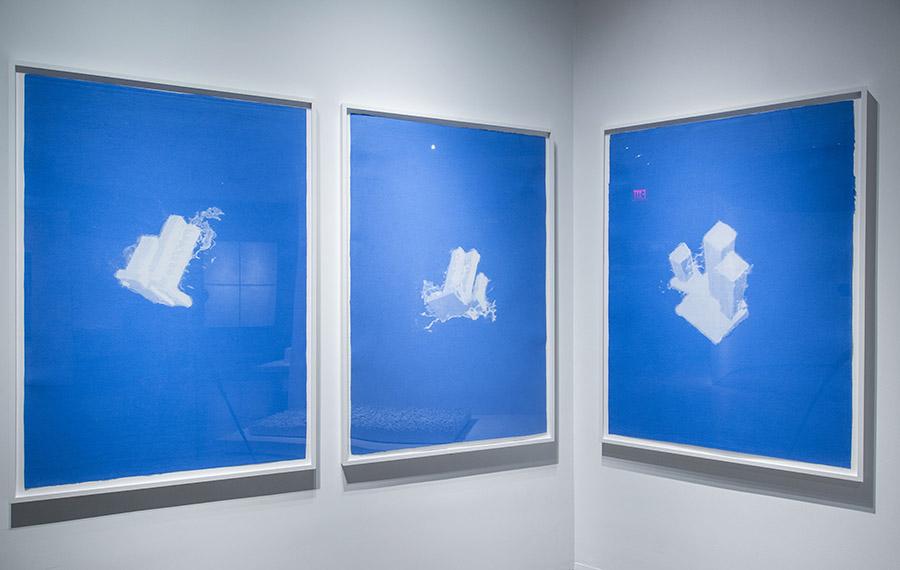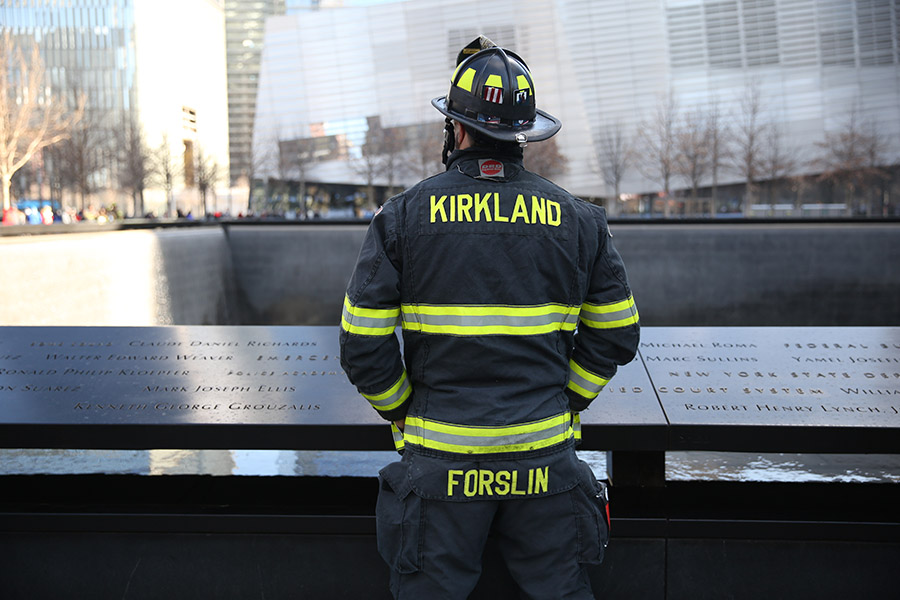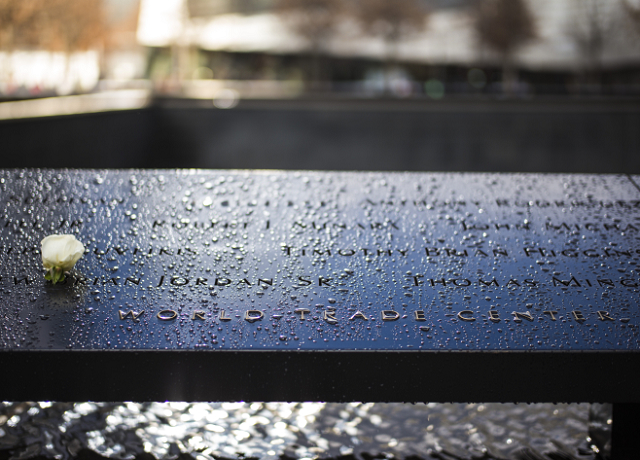Make a donation to the museum
Sculptor Who Lost His Brother Uses Art to Grapple with How 9/11 Changed the World
Sculptor Who Lost His Brother Uses Art to Grapple with How 9/11 Changed the World

On Sept. 13, 2001, artist and sculptor Christopher Saucedo gathered his sculpting tools and drove from New Orleans to New York City to join his two firefighter brothers at the World Trade Center site.
FDNY Firefighter Steven Saucedo arrived at the scene an hour after the towers collapsed with Ladder Company 13. Firefighter Gregory Saucedo responded with FDNY Ladder Company 5. Gregory was last seen on the 43rd floor of the North Tower.
The Saucedo family received an outpouring of support as they mourned the loss of Gregory. Though Christopher was touched by these efforts, he felt exhausted from repeatedly telling the story of 9/11, and abstained from creating art involving that tragic day for almost a decade.
Nine years later, Christopher was given a random month for a 2011 exhibition calendar for Good Children Gallery, the New Orleans gallery that represented him. He was assigned September and the opening reception would be a day short of the 10th anniversary of 9/11.
He found the strength to address the subject and created his “World Trade Center as a Cloud” series as part of his exhibition titled “September 11, 2011 (please stop saying 9/11).”
Christopher deviated from his typical sculptural practice because his usual materials, steel and stone, reminded him too much of the destroyed steel and concrete of the World Trade Center.
Instead, he created 10 paper works by pressing wet layers of white linen, with isometric drawings of the WTC, onto handmade blue-pigmented cotton pulp, causing the materials to bleed into one another. The series captures both the formless and geometric, chaos and control, pragmatic and emotional.
Christopher chose to depict the entire World Trade Center site, and not just the Twin Towers, because he grew up watching the structures being built from across the river in his childhood home in Brooklyn. Each painting stands for one year since the attacks and the loss of the artist’s brother.
“As the brother of a fallen firefighter, I had to make an artwork of the World Trade Center,” said Christopher of the series. “I wanted the work to look like it happened all at once, effortlessly. I needed the images to remind me of the event that changed everything and still not make me sad.”
Christopher struggles with knowing if people respond to the quality of his work, or respond because his brother was a victim of the attacks. When asked about this, Christopher said, “I would like them to judge the work as it communicated visually with that hook that I didn’t ask for. But maybe it’s that hook that made me feel responsible to make that body of work so I can’t separate the two.”
While creating art about a personal tragedy was difficult enough for Christopher, he also had the additional challenge of addressing a subject matter that could induce strong reactions from viewers. He explained, “The higher conversation I’m trying to have is about the public and the media and the complexities of all these things, and here I am as an artist whose job is to make visual art for the public, for a community. And the complexities become who is the audience, how is the audience going to perceive the work, who can handle the frank, brutal reality that 3,000-plus people died on September 11?... And we don’t want to think about that. And I don’t want a photograph of this in my living room either. But I’m an artist. And I had to make art about the World Trade Center because it changed the world.”
Three of the 10 works in the series are now on view in the Rendering the Unthinkable: Artists Respond to 9/11 exhibition at the 9/11 Memorial Museum. In the video below, Christopher discusses his brother, Gregory, and the art he created in response to 9/11.
By Emily Edwards, Collections and Exhibitions Coordinator
Previous Post
3rd Annual New York City Firefighter Stair Climb Honors Fallen First Responders

More than 400 police officers and firefighters, some wearing full gear, climbed the 4 World Trade Center stairs on Sunday to memorialize fallen first responders and military personnel worldwide and to raise money for Friends of Firefighters and the 9/11 Tribute Center.
Next Post
Behind The Lens: Rain on the Parapets

Behind The Lens: In this series, 9/11 Memorial & Museum staff photographer Jin Lee shares his view of select photographs taken on the site. I took this photo on a cold, rainy winter day.